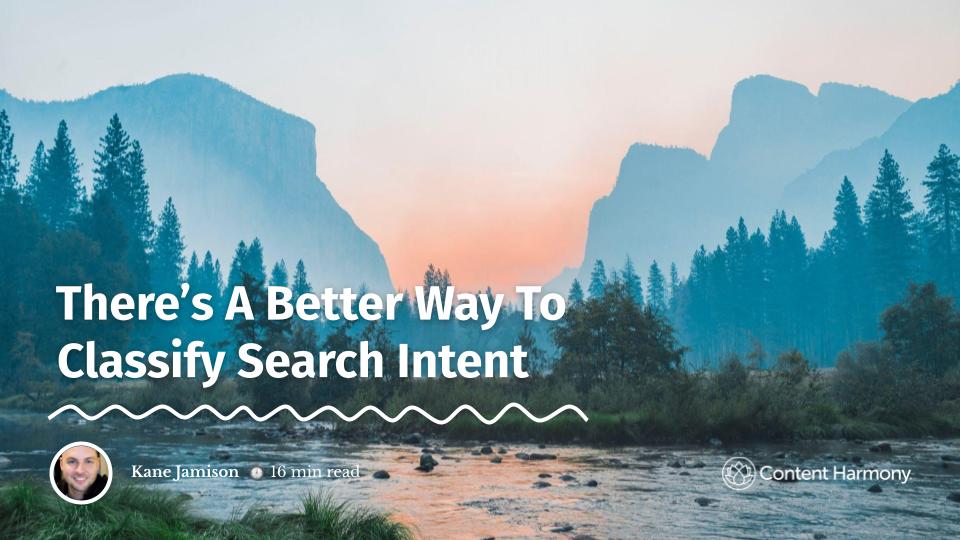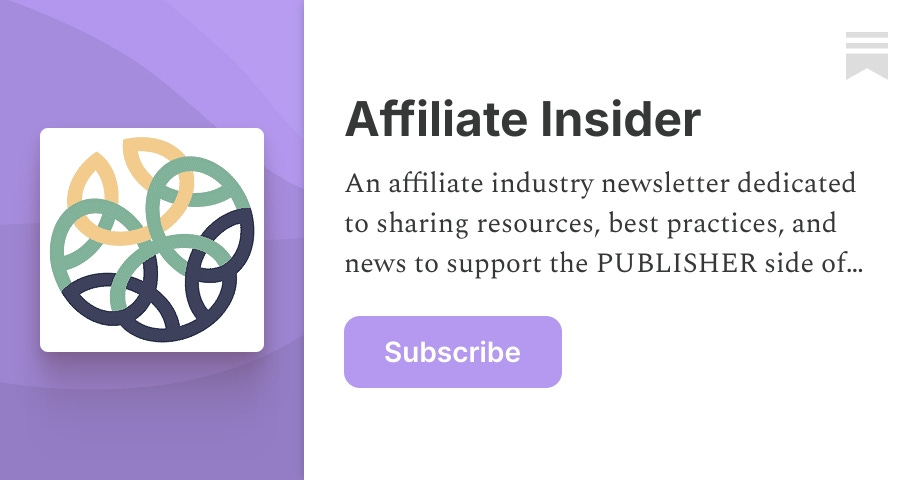- Content Forward: Thoughts from the Front Lines
- Posts
- Deciphering Google’s Mood Swings
Deciphering Google’s Mood Swings
The Mystery of Search Intent Explored
Before we get into everything here today, I want to say welcome to all my new subscribers here!
This is where we get into the nitty-gritty of content marketing and SEO, from a real operator. I’ve been in the content space in some form now for over 20 years and it never seems to get dull!
This summer, I’ve been keeping an eye on all the craziness that is AI, Google updates and talking about some of the things I see in the content space. And yes, I try to share some of my learnings along the way too.
Let’s say, 2023 has been a wild ride of a year for us in content.
With all the volatility in the SERPs this past month, you could say that maybe this is the new normal for us in content.

Is this the new norm for us now?
So, what do we do to keep up?
I think keeping an eye on all the SEO updates and changes happening in our industry is fun, but it can also be a huge distraction and time suck as well.
That’s why I’m getting back to basics this year.
One of the most basic principles in delivering great content is understanding search intent.
There has been so much confusion re: search intent in the SEO and content marketing industries, so I thought this would be a good time to dig into this a bit more here!
Let’s get into it!
How to Truly Understand and Satisfy Search Intent in Every Article
Search intent is such a fundamental SEO and content principle, but there’s still quite a bit of confusion out there about what it does, and how to determine search intent.
I’ve been thinking a lot about search intent as I move my way through optimizations, or plan a new marketing campaign.
When building a website, it’s really important to ‘get’ the search intent behind the topics you choose to write about.
When you ‘get’ the search intent right, you show your readers (and Google) that you really know this topic, and that you are a helpful, trusted source of information.
Knowing the ‘why’ before we create a piece of content lets us deliver on the promises we make to our readers — that we’ll give them what they want to know! And, if we get search intent right, we now have a clearer view of who is coming to us and the problems we can solve for them.
Some of the biggest mistakes I see re: search intent:
Not delivering on our content promises right away.
When we create a piece of content for searchers, we are making a promise to solve their problem or help them in some way. Most searchers are looking for those answers quickly, but we don’t always deliver that. Don’t make your reader hunt for their top-of-mind answers in your content.
A great way to serve up intent is to use a BLUF (Bottom Line Up Front) type section if writing an article. This gives a quick visual signal as well that ‘hey, this is what you’ve come to figure out’. Remember that so many searchers are on their phones — in a digital world, we need to make things skimmable and easy to access as well!
I see this a lot in SEO-focused content as well. The writer or editor uses a tool such as Surfer SEO, Market Muse to expand their topic but ends up adding unnecessary headings, sections, and basic fluff that readers don’t want to sift through to get their queries solved. The most important part of getting search intent right is knowing who you are creating this content for.
Looking only to the SERPs to determine search intent.
Assuming that the SERPs will tell you exactly what type of content you should create is one of the biggest mistakes I see in SEO and content creation, especially when it comes to search intent.
While Google does a pretty good job of understanding and delivering on search intent, sometimes even Google doesn’t deliver perfect results for your specific audience or know what the searcher really wants to see.
This is why we can see many ‘types’ of content under one search term. It’s also where we see mismatched intents, or fractured intent as well — sometimes the search intent for a particular topic can change and shift over time as well.
Sometimes, the results that Google shares are not specific enough for your audience as well, but that’s the ‘best’ that Google can display right now.
The SERPs is one place to look to figure out what a searcher expects, but it’s not a perfect blueprint to tell you exactly what type of content you need to create.
The best way to examine the SERPs is through the lens of a subject matter expert, someone that knows this topic inside and out and can easily ‘tell’ which results ‘make sense’ and which ones are missing the mark.
Using only SEO tools to inform the direction, headings, and topics discussed.
Google has made it abundantly clear that we should not create content for the sole purpose of getting ranked, but here we are, still talking about this in 2023. If you are relying on SEO tools such as Market Muse, Surfer SEO, or Clearscope to tell you what you need to discuss or write about, you’re missing the big picture.
These tools will tell you keywords or topics to include, but they are not always ‘right’. This is why we have subject matter experts write the content, and map out their own headings — they intuitively know what a reader wants to see, expects to see, and should have in an article (way more than any SEO tool out there).
When it comes to search intent, we have to dig deeper than what’s currently in the SERPs and what SEO tools will tell us to do and craft content that serves our specific audience.
It's our job to give our readers everything they expect (and a bit more), and understanding 'search intent' is part of that.
Here is how to understand and satisfy search intent better:
1. Understand that every searcher has a 'why' they are looking this topic up in Google.
Understanding what every reader is looking for and why they are looking for this particular topic is the key to making sure you fulfill the search intent of each article.
In the SEO world, we’ve often been short-sighted when classifying different types of search intent, but it can go way beyond just the typical, Informational, Navigational, Transactional or Commercial classifications we’ve been using.
Again, this is why it’s so important to have a subject matter expert as part of the content creation — their intuitive understanding of a topic + who they are delivering the content for helps determine the more nuanced search terms.
Lily Ray shared a slide recently at MozCon that I think is super helpful when determining the search intent of your content here:
2. Analyze and think about what is already in the Google results.
It's always good to have a quick look at what shows up when you search your topic. Analyze what comes up in the featured snippet (does this answer a specific question)? Are there tons of lists or more in-depth articles? This gives you some clues on what types of articles or results readers expect, but is not the full answer either.
This can be a great starting point for your research but use these results as ‘clues’ to solve the bigger mystery of what the searcher really wants to see. As I mentioned before, this is only part of the picture when it comes to really digging into the ‘why’ behind the search.
3. Always think like a searcher.
I am still fascinated by how we use search, and this is continuing to evolve. Google has become this innocuous part of our day-to-day lives. We look everything up!
When thinking about how you are going to deliver your content, think through where your searcher is, what they are doing, how they are gathering this information and deliver on that:
What headings are they expecting to see?
What questions are they asking about this topic?
Are they looking for a quick, short answer or a more in-depth one?
Do they need a video?
Are they rushing to get info while they are doing something else (i.e. looking up a restaurant to go to in their car)?
Do they expect to see images?
This just scratches the surface of the questions you need to ask when crafting a piece of content, but thinking about what the searcher is doing as well as ‘why’ they are searching for that particular topic is a great start!
4. Embrace the nuance in search intent — don't be afraid to dig deeper.
Search intent can be quite simple, but it can also be quite nuanced, which means it's time to get our expert hats on again and dig deeper. I like to start with a simple search for the term in Google to see the "People Also Ask" questions. With each question, ask -- why is the reader really asking these questions?
You can also look at the “Related Searches” section in Google to see related topics a searcher might be looking for — this goes a bit deeper.
I also like to explore Reddit forums to see the types of questions real people are asking about a topic. If you are not a subject matter expert, you are going to have to really dig into this a lot more than someone who is. The more we can dig deeper and figure out the ‘why’ behind a search intent, the better content we can deliver!
Things to Read, Watch and Ponder
Ready for a hot take on all things UGC, SEO and SGE? The brilliant Tory Gray breaks down how to use UGC to deliver better content for your audience. I love this take because Tory walks through how searches use Google now, but thinks ahead to how SGE might serve them. How can we get more of that vital ‘why’ data? Her answer: UGC!
Ever wonder what happens when AI uses AI to train AI? It’s something to think about as our data sources become AI-generated murkiness. This article breaks down exactly what can happen when we start to see more synthetic data training new AI models (they liken it to Mad Cow disease). Ouch!
When we work with new clients, or build sites from scratch, we get the question, “How long does SEO take to work?’ Who doesn’t want to see the fastest results? Search Engine Journal breaks down this question and offers some simple strategies to ensure that your SEO works, not just now, but in the long run.
Want another way to find low-hanging fruit keywords? Jared Bauman walks through the keyword research tool Low.Fruits.io breaking down exactly how he uses this for his agency. Definitely worth a watch!
If you want to continue to learn more about search intent classification, here’s a resource you can really nerd out over:
Thanks again for your readership!
Yesterday was a long weekend holiday here in Canada, and even though I did get some time to work, I also had a great time exploring the east coast of Canada!
The biggest surprise in my day was finding this waterfall at a pit stop on my way home from Halifax:

Waterfalls in Victoria Park, Truro, Nova Scotia
And it got me thinking about the ways we can also surprise and delight our readers as well. Yes, we always want to deliver on the promises we make in our content, but it’s always good to give them just a bit more.
I mean, why are we even creating content in the first place?
Great content always gives me something extra, something unexpected. As you move through your content plans and creation this week, look for those ways we can surprise our audience. Hopefully, your surprises will be as inspiring as this beautiful waterfall!
Cheers! Amy
Some Bonus Newsletters You’ll Love
If you want to get into the weeds on these topics, here are a couple of newsletters to subscribe to.










Reply